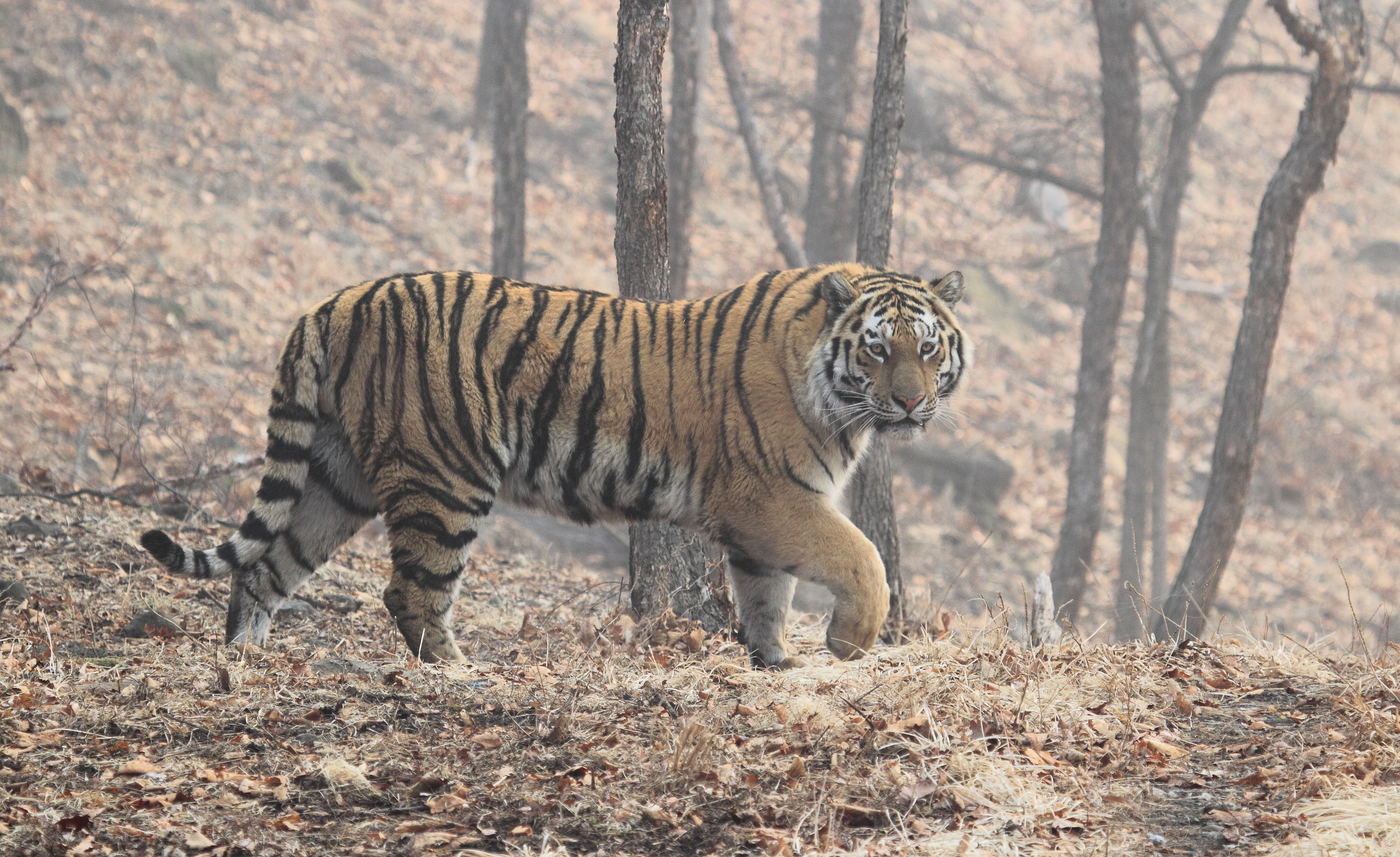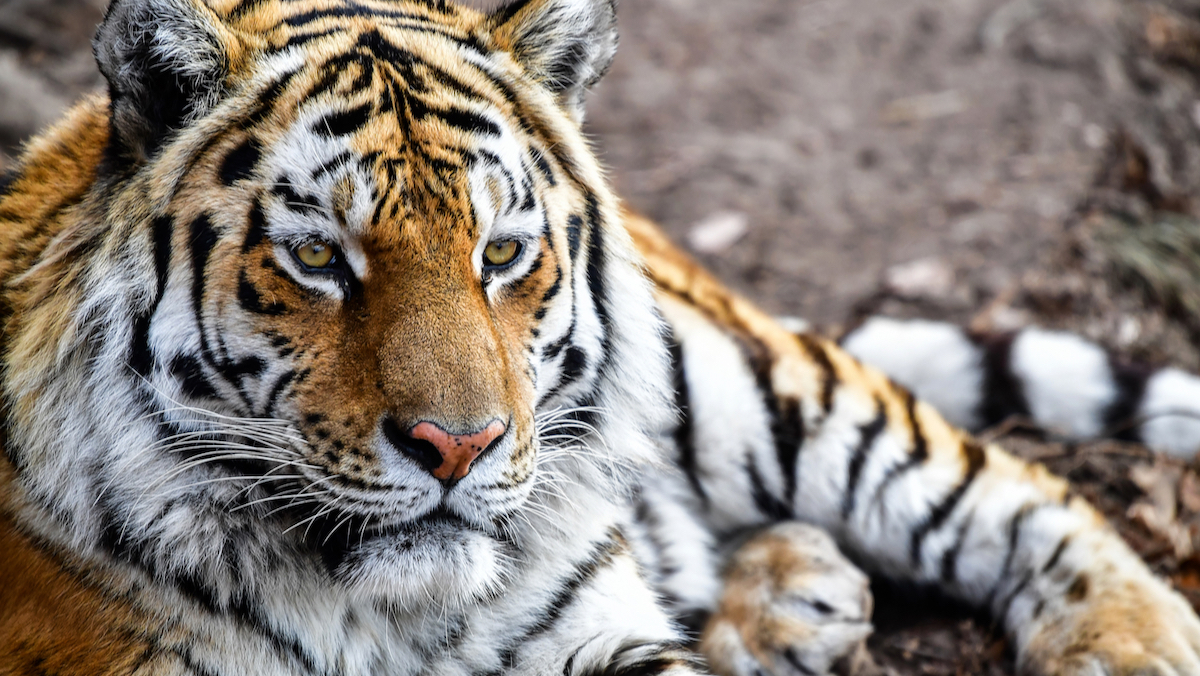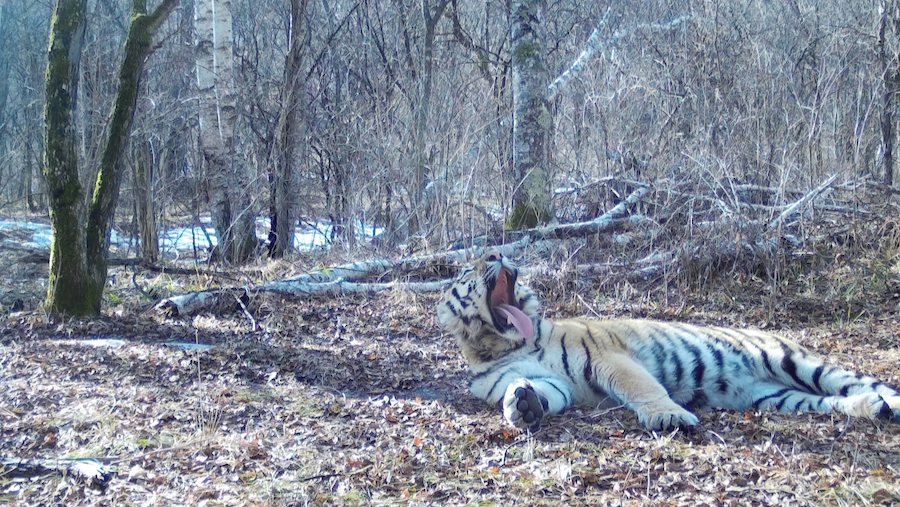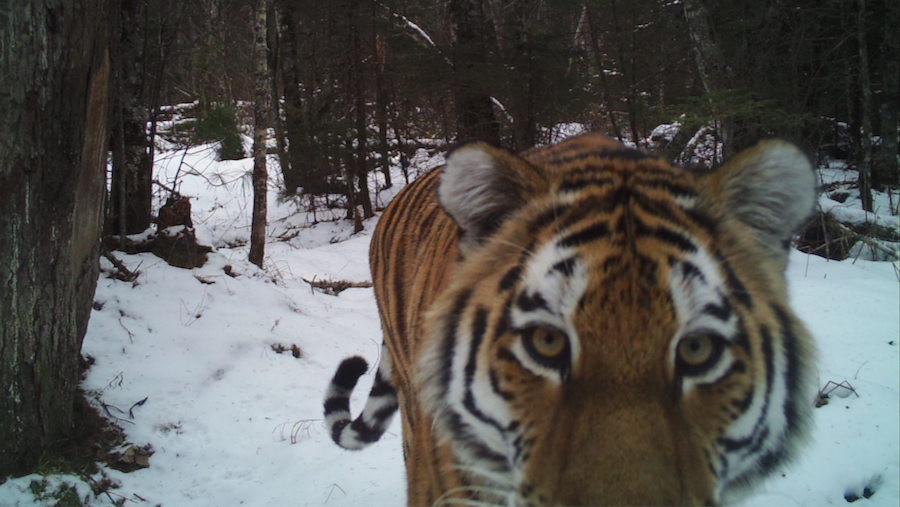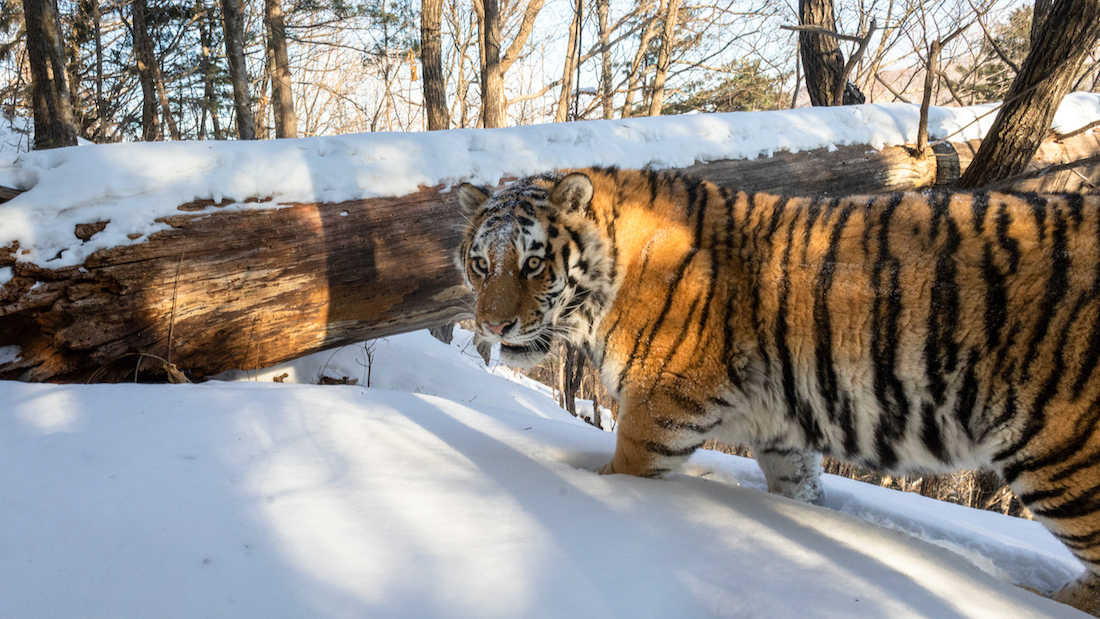Who is the Amur tiger?

the largest living cat on the planet.
The length of the male’s body – from the tip of its nose – can reach over 2.5m (the tail length left out!) with its height at the shoulders of about 120 cm.
The average weight of a wild male is 165 kg to 180 kg. It could seem wrong but the tiger gains noticeably in weight for winter due to the increase in the layer of adipose tissue to survive in severe cold conditions. There are individuals of 260 kg and even more. However, such giants are extremely rare these days. Tigresses are smaller than males: body length usually reaches 180 cm with an average weight of 140 to 160 kg.
The tail of a tiger can be 1 m long, sometimes even longer. Like all felines, it serves as a kind of balancer. The tiger runs, turns to the right – and its tail deviates to the left, not to ‘skid’. And vice versa.
The tail always ends with a black tip and bears transverse lines, rings, at its main part. There are usually 10 such rings, but there can be 8, or 9, or 11. As a rule, there are no solid rings at the base of the tail, where they ‘open’.
The paws of the Amur tiger are short, although they are longer than those of other tiger subspecies. The paw pads, on which the tiger rests when walking, are wide so as not to fall into deep snow.
TIGER
Kingdom: Animalia
Class: Mammalia
Order: Carnivora
Family: Felidae
Subfamily: Pantherinae
Genus: Panthera
Species: Panthera tigris
Subspecies: Panthera tigris altaica
The main color of the fur is orange. It is white on its belly. The sides are covered with vertical stripes, which, against the visual contours of the body, help to hide in the depths of the forest and hunt. In addition, the tiger victims have black and white vision, so they cannot see the orange color. There are exactly the same stripes on the skin: if you shave off its fur, then dark hair grows on the dark stripes, and the pattern is completely restored.
Tiger’s fur is thick, double. Hard guard fur – what we usually call ‘hair’ – is longer on the belly, ‘pants’, on the chine. Like a flexible shell, it covers the entire body of a tiger: snow and raindrops roll without touching the skin, the claws of opponents slide off without touching the body.
In addition to the coarse guard fur, tigers have undercoat. It is warm and soft. Juvenile (children’s, adolescent) pelage sheds at the age of 3.5 to 5.5 months to be changed by the ‘adult’ one.
In winter, long – up to 10cm – belly hair and adipose tissue is most thick (over 5 cm) in the abdomen, which protects from the cold.
The arrangement of the stripes is unique for each tiger. Just as police officers identify people by fingerprints, scientists use stripes to identify individual tigers.

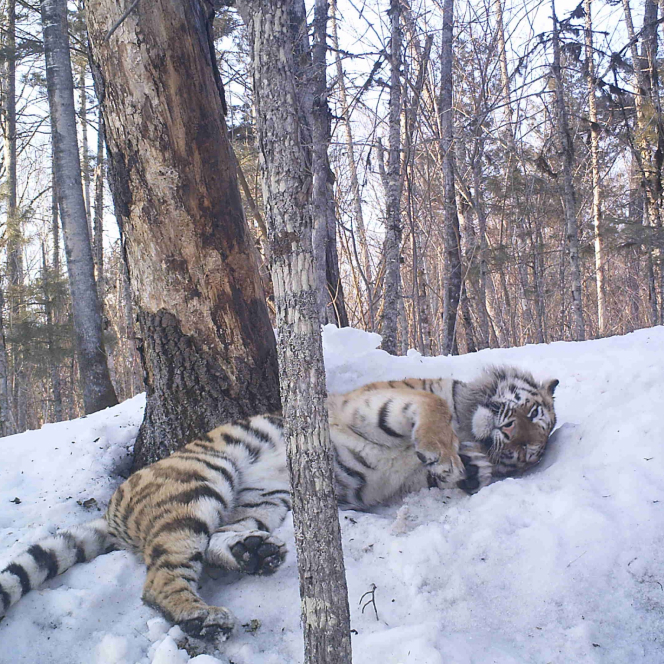
Night vision (twilight) of tigers is six times as good as the one of the humans. A tiger’s eye contains a large number of photoreceptor cells (receivers of light, the so-called rods). Behind the retina, which is sensitive to the light, there is a tapetum in the eye – a special layer containing light-reflecting cells. They seem to return the light ‘slipping’ past the retina back. The light reflected from the tapetum is usually green or yellow: this is how the tiger’s eyes ‘glow’ in the dark.
In daytime, the tiger relies more on its hearing. By reflecting light, the tapetum slightly obscures vision. The “striped ones” also have a few times as little cones as we do – other light-sensitive cells of the eye that provide daytime vision. Tigers do not perceive all colors. Best of all, they distinguish between blue, green and yellow ones. They cannot focus the eyes like humans: a person, in order to see something, changes the shape of the lens while a tiger can only physically approach the object that interests him.
Tigers cannot see anything in utter darkness. Their eyes do not ‘glow in the dark’ either, because the tapetum has nothing to reflect. For their night vision, there must still be at least a little light in the dark. However, there is no absolute darkness in nature; if their eyes ‘do not glow in the dark’, this does not mean that the animal does not see anything – its favorite time for walks is the night when it seems to a human that it is not visible.


The tiger’s ears are small, rounded. In the front, they are covered with white hair and are always black with a large white spot in the upper half in the back. It is believed that these ‘mirrors’ are used to guide those who follow behind. In particular, thanks to the well-visible spots, the cubs following their mother can easily follow her movements.
The tiger’s ears are highly mobile: more than a dozen muscles can rotate the ear nearly 180 degrees. Each ear can move independently and follow different sound sources. The structure of the ear and the hair inside it provide perfect sorting of sounds. Like all cats, tigers can not only distinguish and memorize the sounds, but also determine their direction, pitch and intensity.

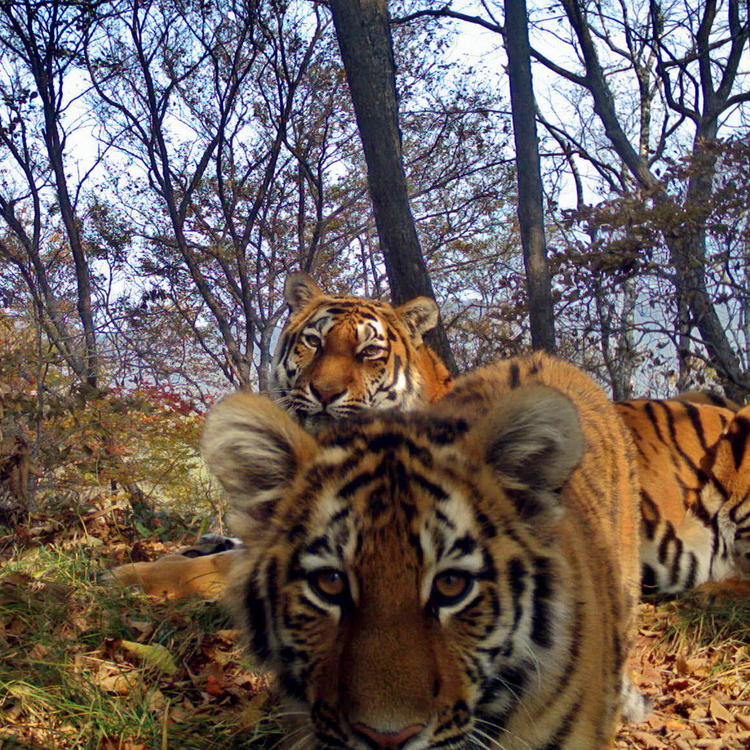
The sense of smell for a predator is also an important thing. The tiger smells hundreds or, rather, thousands of times as good as a human, but worse than a good hunting dog. However, this is enough for him.
Tigers (and some other animals) also have one more sense of smell. It is called VNO, or vomeronasal organ. It picks up specific chemical ‘odors’, pheromones. In humans, the VNO, of course, is weak, and we do not deliberately drive a smell into it in order to get used to the smell and analyze who there is and what it smells like, and we perceive pheromones unconsciously, but tigers and some other animals do it completely consciously.
Have you ever seen how, say, a cat, having nosed tightly about something interesting to her, sniffed out something that made her mouth open and a distracted grimace of disgust over its face? This grimace is called ‘flehmen reaction’, which does not mean ‘pshaw!’ to it. It sniffs like that. It’s just that VNO has an outlet not in the nose, but in the oral cavity, behind the teeth, in the path of inhaled air. Thus, for these pheromones to be more effectively captured by this device's receptors, they have to ‘grimace’.
Sometimes, watching a tiger, you might think that it has licked such muck that it cannot breathe normally because of the smell. By the way, this is how your own pheromones work.
After that, molecules of these odors that get on the receptors follow up – the whole processing is going on: olfactory bulbs – tonsil – hypothalamus, and the smell reaches the brain. For males, pheromones carry a huge amount of information that ensures successful reproduction. Their ‘analysis’ unmistakably tells how old and what condition the female is in and how soon she will need a ‘groom’. The females will find out who there is, what the gender, age, physical condition it is in, and whether it will be suitable for ‘wedding’. In a word, it is a useful organ, and tigers, of course, actively use it. But why in the ‘intimate sphere’ they do not trust the nose and why they ‘go into overdrive’ when flehmening is still a disputable question.
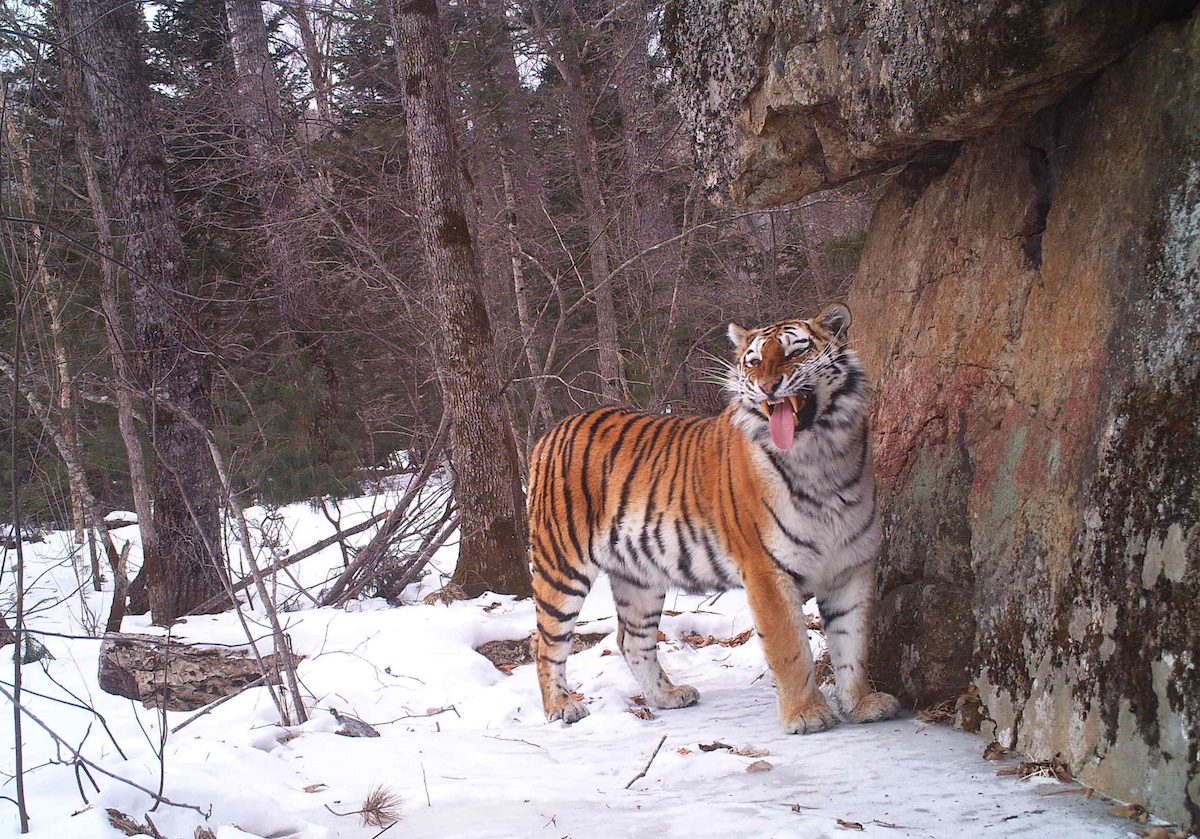
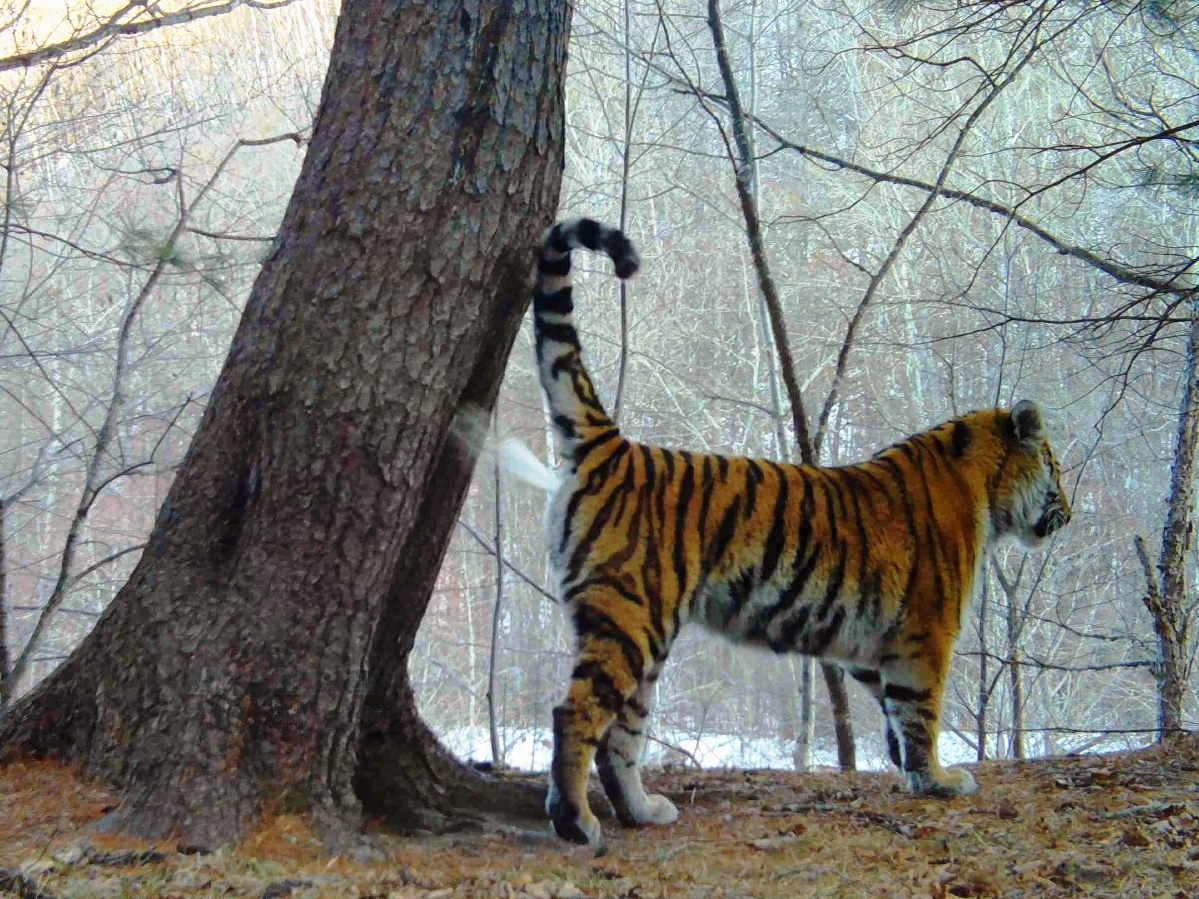
The tiger’s whiskers (vibrissae) also belong to the senses, and moreover, one of the most perfect. They register vibrations in the air. Very elastic, white, sometimes brownish at their base, they are arranged in 4-5 rows on the face of a tiger. They are up to 16.5 cm long, up to 1.5 mm thick, like a strong fishing line.
Vibrissae are located not only on the face. They are on the belly, paws, and near the tail. Each hair is directly connected with a special nerve, so that information about the slightest air movements near the tiger instantly enters its brain to be analyzed: what is it? Wind? Or victim’s movement?
«The ‘span’ of a tiger’s mustache is equal to the width of the body, if you look at the tiger directly, full face.
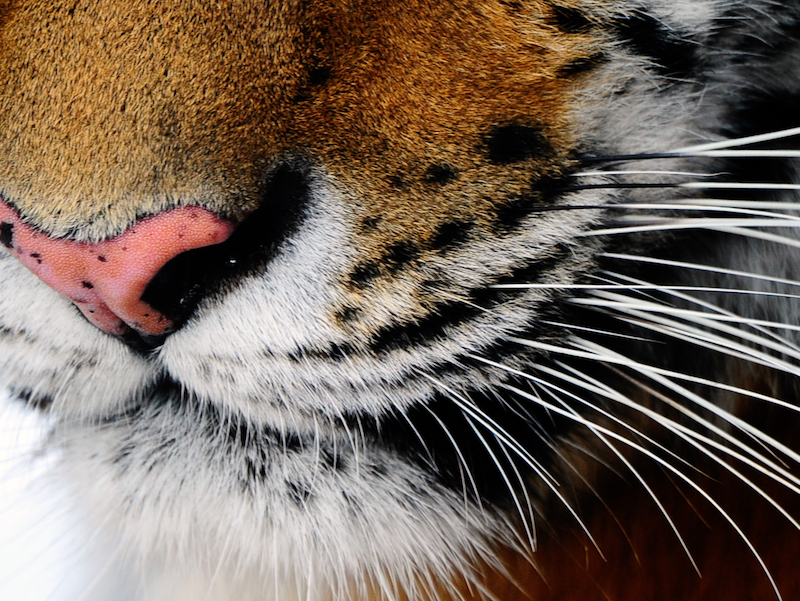
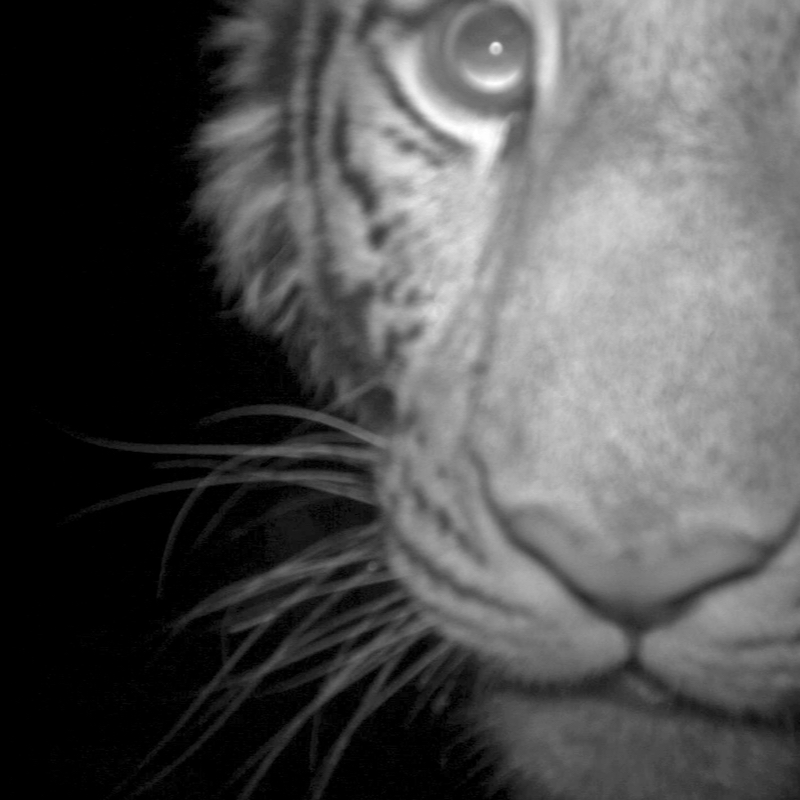
The tiger is rather a silent creature. Even tiger scientists, who have wandered around its habitats for over half a century, faced the beast at a short distance, can hardly boast they have heard the roar of the beast over a dozen times. However, once is quite enough to memorize it for a lifetime: thunderous rumbles, which really freeze the blood in the veins.
It is a strange feeling when, a tiger suddenly makes its ‘A-ah-uff’ somewhere far away in the night! Calling, wailsome cry. Then it gets closer, very close... and a clear relief when the beast begins to move away. What was it? What made the silent creature call someone? Even when this rumble quietens down in the distance, the ‘aftertaste’ of danger won’t go away that soon.
A little more often you can hear a tiger’s roar – however, it will definitely not work to convey it in writing as ‘rrr’. It would rather be a short guttural and rumbling ‘ooh-ooh’. We just don’t recommend listening to it in the wild at night...
Like any other cat, the tiger bites like a punch or hole punch: the jaws move only up and down, squeezed and extended. It cannot move its lower jaw to the left and to the right.
The tiger’s teeth are the main lethal weapon. Their length and shape, multiplied by the incredible force of compression of the jaws by human standards, which is provided by a short, rounded skull, leave no chance to the victim. Well, after that, the tiger feasts for a long time and relish – if the prey is large, the feast can last for two weeks. He walks a bit nearby, takes a nap by the victim, and gets back to eating.
What is interesting: in such a ‘meat grinder’, the tiger prefers not to grab the victim’s muscles in chunks all over its mouth, as wolves do, but to lick them. Tigers do it with great pleasure and very well, because their tongues are like a rasp. Along the edges, it is covered with slightly horned ‘fleshy papillae’, which help, a kilogram of meat migrates with diligence into the stomach in three to four minutes, and there is no need to chew.
By the way, for a bear or other tiger, a tiger’s teeth bite, even if it does not hit the neck, is often fatal. Not because the tiger kills another tiger like prey, but due to infection that gets into the wound with a bite.
The bites are often deep (up to 7 cm), and the upper edges of the wound close, while inflammation happens at the bottom of the wound channel which can lead to blood poisoning and death of the bitten animal. Therefore, a warning bite of a male by a female defending tiger cubs or a ‘small bite’ of one male by another in the forearm can lead to tragedy.
Tigers’ dairy teeth change to indigenous once with age, like ours do. At birth, they have no teeth at all, but the places of their appearance are already marked on the gums.
And later it depends. The teeth of an animal are a universal ‘device’. It is both a weapon and a tool for everyday use. For the animal’s affliction, it is irreplaceable. Animals change their winter-to-summer ‘clothes’ regularly, which is not true to their teeth. By the age of ten, one or two canines will have been broken off, and in rare cases, all four of them.
The tiger has 30 teeth in its mouth. Although humans have 2 more of them, we don’t beat tigers: they have 6 incisors and 2 canines up to 7.5cm long both on the upper and lower jaws.

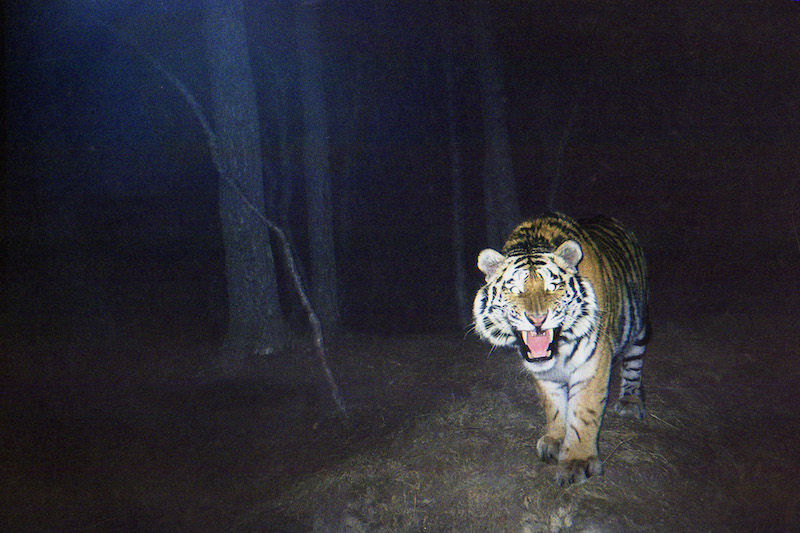
TIGER
Kingdom: Animalia
Class: Mammalia
Order: Carnivora
Family: Felidae
Subfamily: Pantherinae
Genus: Panthera
Species: Panthera tigris
Subspecies: Panthera tigris altaica
The specific name of the tiger comes from a similar-sounding Iranian name (sharp, fast), which was first borrowed by the Greeks, and later by other peoples.
Carl Linnaeus, the Swedish naturalist (1758) was the first to describe the tiger, while people in the western countries, where tigers did not live, learned about the name of the unseen animals from Latin (tigris). As the information and the size of the collections increased, the Nature revealed the difference between its habitats, and it became clear that there was only one species, but due to obvious external differences, a more fractional ‘subspecies’ classification was needed.
Almost a hundred years later (1844), the tiger living in the Amur basin was also classified. The variety of its names (Ussuri, Siberian, Manchu, and even the North Chinese and Korean) is mainly due to both a change in our knowledge of what a subspecies is and where its boundaries are, and improper use of the names by scientific knowledge popularizers.
In his works, N. A. Baykov called it ‘Manchu’, K. A. Satunin in his turn divided it into two subspecies – ‘Korean’ and ‘Amur’, etc. There were many disputes about the species this animal belongs to. Until they gained enough information to prove the difference between the animals is purely individual and there is just one subspecies described by scientists on the basis of a sample obtained in the Amur River basin. Thus, the tiger remained the ‘Amur’ one.
By the way, it is not only scientists that called him different names. The natives of the Far East in ancient times used to call him ‘amba’, the inhabitants of Siberia called him ‘babr’, and the inhabitants of Central Asia called him ‘dzhulbars’. Other peoples had different names. However, the tiger itself did not even know what it was called. He just lived.
